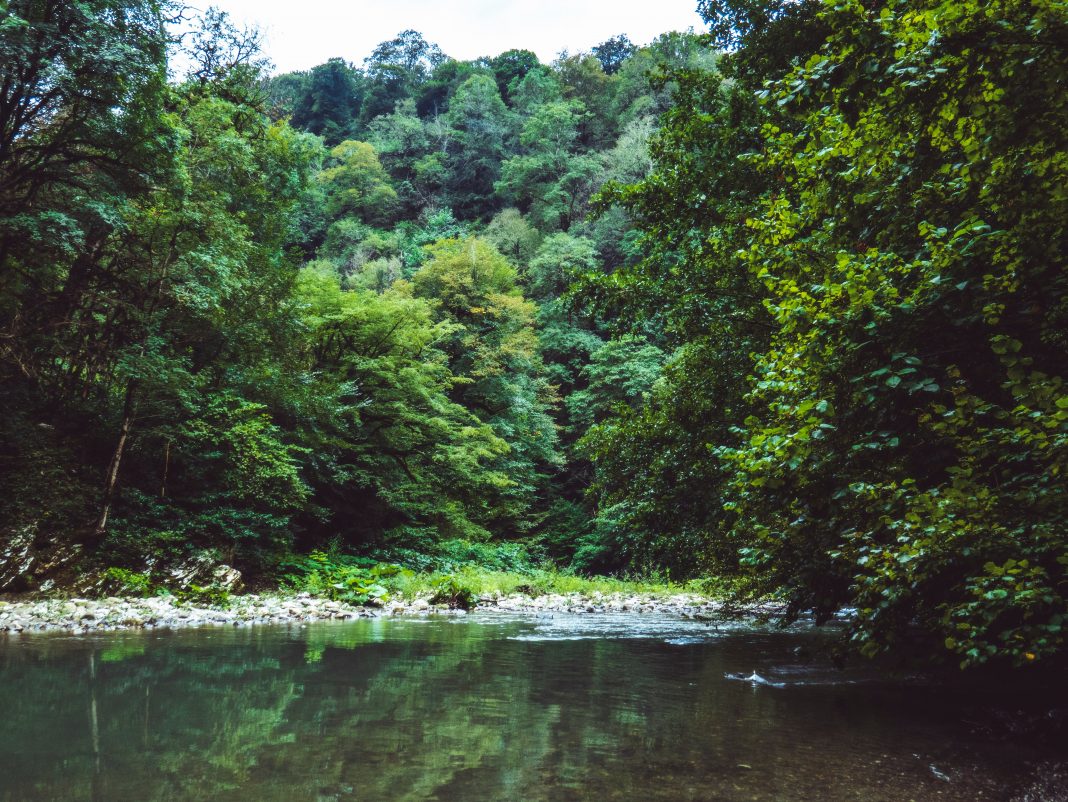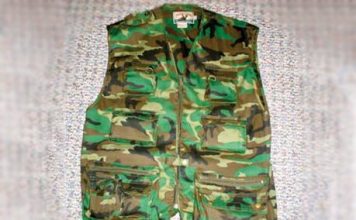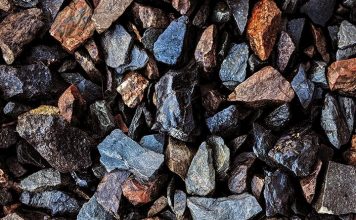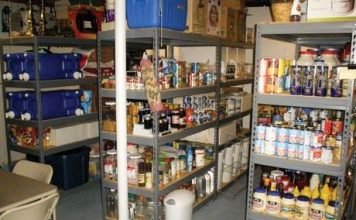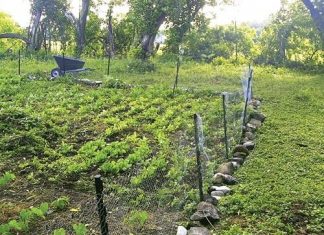 |
|
| Issue #99 • May/June, 2006 |
I have been writing solar power articles for many years on every possible application. This has included everything from simple solar chargers for cell phones to solar-powered well pumps, RVs, and many different types and sizes of solar homes. However, I am still surprised that the most feedback and questions I receive start out like this: “I am planning to build a small weekend cabin so I can get away from this crowded city. I only need to power a few basic appliances and lights; what do I need to do?” I have decided to address this constantly repeating question in a two-part article, since there are many things you need to know before you actually start construction.
First things first
|
First, you need to understand this basic concept. Every appliance you currently own that is powered by electricity is plugged into a wall outlet. This simple wall outlet that most people don’t even notice has the capacity to power anything you plug in for as long as you want, except during power outages and after your payment is late!
I know this sounds obvious, but it really isn’t. Most people take for granted how this electricity is generated, and the transmission lines, transformers, switchgear, and constant maintenance it takes by thousands of utility employees to get it delivered to your wall outlet, all for just a few pennies per kilowatt-hour. Considering the complexity of our nation’s utility grid, for the most part it’s fairly reliable except for the occasional storm outage. However, building your cabin in an area not served by a local power line means you will be responsible for all of the above. In addition, regardless of whether you plan to power your cabin by batteries, a generator, hydro-power, wind power, or solar power, you will not have the endless supply of electricity you have now, which means your habit of leaving lights and televisions operating all day when not actually being used must end.
Your value system needs to also change when shopping for any electrical device. Finding which stereo, light fixture, or refrigerator has the lowest wattage is your primary concern regardless of price. For example, a 75-watt lightbulb costs less than a dollar and a 15-watt compact fluorescent lamp that produces the same lumens of light, costs almost $8. But your cabin’s power system could operate the compact fluorescent lamp five times longer, or illuminate five rooms instead of one for the same power usage.
Typical electrical loads
People tend to think that a small house will require less electricity than a large house, so a cabin would use even less. However, if we omit space heating and cooling, we will usually find about the same number of kitchen appliances, the same clothes washer and dryer, the same audio/video equipment, and the same mix of smaller devices like phone chargers and computer games. Although a larger home will certainly require more lighting, this does not necessarily mean they all are operating during a typical day. In other words, it’s not how many square feet in your home or cabin that matters, it’s the amount of electrical devices you plan to operate and for how long that determines your power requirements.
|
Let’s review your absolute minimum power requirements, assuming you do intend to have a few creature comforts. For anything less than the following list you may as well just pitch a tent!
First, you will need at least one light fixture in each room, and one fixture at any exterior door or deck. A 15-watt compact fluorescent ceiling fixture or table lamp should do just fine for most rooms, but you will want more lighting in the kitchen and dining areas. A really basic small cabin lighting system usually consists of 12-volt DC lighting fixtures typically sold for the RV and boating industry, powered from a 12-volt deep-discharge marine battery. However, low-cost DC to AC inverters are becoming so reliable and efficient that you could utilize normal 120-volt AC wiring and appliances, which are usually less expensive than specialized DC devices and are available in more varieties.
Selecting your kitchen appliances requires more effort since they usually consume much more power than light fixtures. First, you will want to avoid anything that includes an electric heating element. This means that toaster ovens, electric hot plates, electric hot water heaters, electric space heaters, electric drip coffee makers, and electric kitchen ranges are out. A small microwave oven is acceptable since they usually only operate a few minutes per cooking task, which is not a major drain for most back-up power systems. Actual battery and inverter sizing recommendations will be addressed in Part II of this article.
Wood stoves
|
You will want to use propane or wood-fueled heaters and stoves for all cooking, space heating, and water heating. Water heaters are also now available with a wood-fueled firebox built into the bottom that will heat water for a shower fairly quickly.
If you will be building your cabin in a location requiring winter heat, I’m sure you are already planning to include a wood stove or fireplace for space heating, but a wood cook stove is also worth consideration. Although most models sold today cost in excess of $1,500, many are based on the very efficient wood cook stove designs of the late 1800s, which were very efficient and easy to operate.
For those of you too young to remember an aunt or grandmother still cooking on a wood stove as late as the 1950s, it is possible to bake biscuits in the oven, have four pots cooking on the stove top, and keep plates or food hot in the warming box, all at the same time, from a single firebox that uses surprisingly little wood. We purchased a wood cook stove for our dining room even though our solar home has a really nice commercial-sized propane stove. We enjoy sitting around it on a cold snowy day while it keeps the coffee pot and our feet warm.
Unfortunately, using any wood-fired appliance does require more work than turning a gas valve. You will need to store lots of dry split wood, allow more time to warm up, and occasionally remove the ashes. A wood-fired cook stove can be a problem on a hot summer day since it could overheat the interior of your cabin. However, if you want minimum dependence on the outside world and are physically able to keep the woodbin full, then a wood heater and wood-fired cook stove are a must-have for any off-grid cabin or retreat. Using a wood-fired cook stove and space heating stove allows you to not require any conventional fuels to operate your cabin, except for a possible backup generator.
Food refrigeration
A conventional 120-volt AC refrigerator represents one of the largest electrical loads in any home, and is not very practical for most off-grid power systems. In addition, unlike other appliances that you control the operating times, an AC refrigerator or freezer will cycle on and off many times each day and night. This is a major power drain on all but the largest inverter-based power systems, and you should consider alternative forms of food refrigeration.
|
Most weekend cabin users bring a cooler full of ice when they head for the woods. Many higher-quality ice chests will keep food and drinks cold for up to four days. However, there are now some excellent low-voltage refrigerators and freezers available that can operate from a solar-charged battery due to their very efficient low-voltage compressors and thick wall insulation.
Domestic water
If you want running water in your remote cabin, the geographic location will determine if and how this can be done. There are many parts of the United States where you can reach a good supply of clean water using a drilled well. There are other parts of the United States where you could not find water if you drilled 50 wells. If a well is not possible, you may be able to collect rainwater off the roof into a cistern, like most western farmers and ranchers did for most of the early 1900s.
If these methods are not practical, many off-grid cabins can pump water from a surface spring, nearby stream, or fresh water lake. If you are in an area with a high water table and do not need indoor plumbing, hand-operated pitcher pumps are still available and you can just carry water in buckets from a nearby drilled well. However, if you will be using surface water, especially if your system will include a storage tank, there is a much higher risk of water contamination, and you should include a quality in-line carbon filter and ultra-violet purifier. Together, these will filter out and kill anything that could be harmful to your health or would taste bad.
|
I also recommend treating any water storage tank with chlorine bleach or hydrogen peroxide every few weeks to reduce the chance of bacteria growth and keeping any tank openings or vents covered with insect screening. Be sure to follow manufacturer’s recommendations for treatment dosage.
Since a water heater, flush toilet, and all hot and cold water piping will contain water at all times, these systems need to be drained if there is any danger of freezing when the cabin is left unoccupied. If your cabin will include indoor plumbing, be sure to include a water shut-off valve and a drain valve located at the low point of the hot and cold water piping that are easy to access each time you will be gone for an extended period during freezing weather conditions.
Clothes washing
Your remote cabin or retreat may only be intended for weekend get-a-ways and the last thing you want to do is wash clothes, but for those who do, here are a few suggestions.
Most conventional clothes washers not only consume lots of electricity to operate, but they also require lots of very hot water, which uses even more energy to pump and heat. If you do need to wash an occasional load of clothes, I would look for one of the smaller front-loader design models with very basic manual-dial timer controls. You do not want some mega model with 43 cycles and digital readout that consumes electrical power 24 hours a day. My absolute favorite is the Staber washer. It is American made, it is field repairable with a removable front panel that allows access to a very basic belt-driven drum, and unlike most other washers, it has no complex mechanical gear boxes or electronic controls.
Although it is top loading, the actual drum rotates like a front loader on a horizontal axis, and its very high- speed drying cycle removes almost all remaining water. This washer not only will operate on an inverter as small as 1,000 watts, but it requires less than half the hot and cold water of a conventional clothes washer.
For clothes drying I suggest using the old standby, a solar and wind-powered clothes line. If this is just too labor intensive for you, your only real alternative in an off-grid application is to use a propane clothes dryer, and only operate the dryer when the generator is running to recharge the battery bank or operate other large appliances. Gas dryers have a large electric motor load that operates up to one-half hour per cycle, and this will quickly drain down all but the largest battery storage systems.
Audio/video requirements
Now that we have addressed lighting, space heating, water heating, water pumping, cooking, and refrigeration, there is one remaining electrical power requirement. Although your main reason to head to the woods is to get away from telephones, televisions, and computers, it is still possible to include some of these devices if really needed, even if your remote cabin will be totally off grid. A laptop computer is much easier to power from a battery-based power system than a standard desktop computer and monitor. A small inkjet printer uses far less electrical power than almost any other type, and a small satellite modem also requires minimum power to operate. Be sure all computer equipment includes the EPA “ENERGY-STAR” sticker indicating they have been designed to use minimum energy.
|
If you still plan to leave all the electronics behind, you will probably at least want to have a good quality radio or CD player; at least your spouse will. When shopping for any audio/video device that will be used off grid, you want to look for models having the lowest wattage ratings and avoid any devices having remote controls. If this cannot be avoided, be sure to plug them into a switched outlet strip or wall outlet that is controlled by a light switch, as all remote controlled devices still consume electricity at all times; otherwise, they could not respond to the remote control signals.
I took a lab-calibrated digital watt-meter to a major appliance retailer and found that almost every satellite receiver in the store consumed the same amount of electricity, regardless of being turned on or off. It appears the front switch only operated the on/off indication lamp, so be very careful in your selections.
Summary
In Part II of this article, I will take you through sizing and installing a basic solar photovoltaic and generator based off-grid power system for your dream cabin or retreat. Until then, this would be a good time for you to decide what your basic electric loads and appliances will be. Make a list of everything your cabin will include that requires electricity, and be sure to list the wattage and the estimated hours per day or week each will operate. Remember, at today’s $10 to $12 per watt average installed cost for an off-grid power system, your system cost would increase almost $1,000 just to power a single 75-watt incandescent light bulb, so it’s really worth the effort to only purchase high efficiency lighting and appliances.
Sources
• Low-voltage solar refrigerators and freezers:
SunDanzer 915-821-0042 www.sundanzer.com
• Low-energy clothes washers:
Staber 614-836-5995 www.staber.com
• 12-volt DC lighting fixtures:
Camping World 866-645-8576 www.campingworld.com
[weaver_widget_area id=’articles_about_yago’ class=’text3′]


